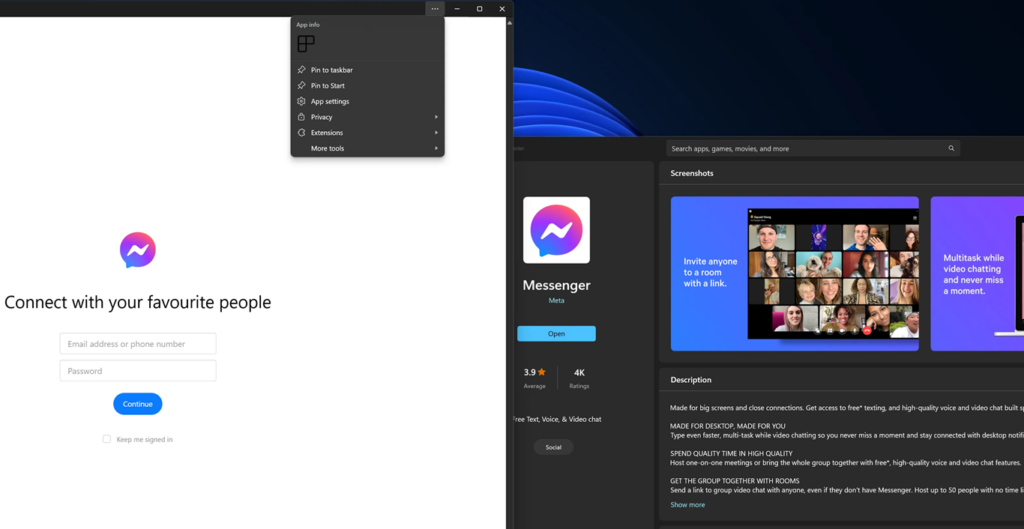In a move that feels all too familiar for Windows users, Facebook Messenger has quietly transitioned its native desktop app to a Progressive Web App (PWA). If you’re wondering why your Messenger app suddenly feels like a dressed-up website — well, that’s because it essentially is.
Facebook Messenger is the latest in a growing list of apps to adopt this change, and if it feels like déjà vu, that’s because Netflix recently pulled a similar stunt, swapping out their native app for a PWA on Windows. While it may seem like tech companies are all colluding to make life harder for desktop users, there’s more to it.
PWAs have been around for a minute, with Microsoft first introducing the concept back in 2016. By 2018, they made their debut on Microsoft Edge and Windows 10, and since then, they’ve been hailed as the future of apps, combining the web’s convenience with the experience of a native application. However, with that bright future comes a few glaring issues that have irked Messenger users since the switch.
Here’s a description of the Facebook Messenger app in the Microsoft App Store before and after the update.
Let’s get the obvious out of the way: Messenger PWA feels… different. Not “sleek-new-update” different, but more like “where-did-all-the-good-features-go?” different. It’s faster, but it comes at the cost of a few handy features. Gone is the notification dot in the taskbar that was basically the bat signal for unread messages. Instead, the PWA occasionally serves up a blank taskbar or, worse, flickers annoyingly when you switch chats, with a pesky URL popping up at the top. Location sharing is also missing.
Before you completely dunk on PWAs, let’s take a step back. There are benefits — faster updates, less bloat, and a UI that’s much easier on the eyes. However, these improvements come at a price, and the frustration from users has been loud and clear. If you’ve scoured Reddit, X, and news channels or your own inner monologue, you’ll see a consensus that Messenger has taken a few steps back in usability, performance, and just general app comfort.
The shift to PWAs isn’t unique to Messenger. Major companies are either making the switch or already did because PWAs are easier to maintain across multiple platforms, offering a single codebase for both desktop and mobile. This trend isn’t stopping anytime soon, so we’re probably going to see more of our favorite apps go the PWA route. The Netflix debacle a few weeks ago just highlighted that.
Notably, the native Messenger app for Windows is still available to download directly from the Messenger website. For now, those of us who haven’t seen the change can still enjoy the older version before it’s inevitably phased out, but how long that’ll last is anyone’s guess.
TechIssuesToday primarily focuses on publishing 'breaking' or 'exclusive' tech news. This means, we are usually the first news website on the whole Internet to highlight the topics we cover daily. So far, our stories have been picked up by many mainstream technology publications like The Verge, Macrumors, Forbes, etc. To know more, head here.




